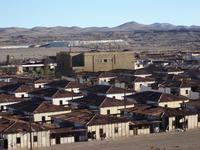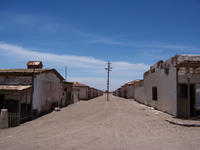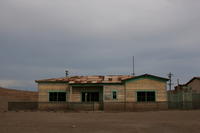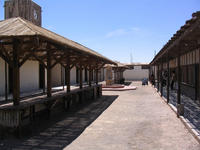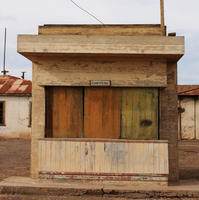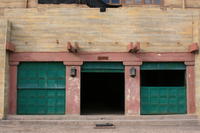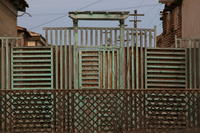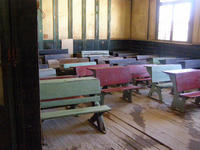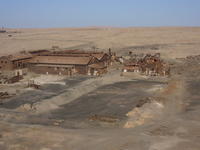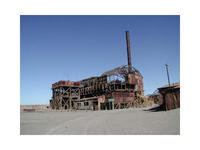You are in: South America -> Chile -> Humberstone and Sant... , and traditional search or Image Gallery will yield results of this site only
Humberstone and Santa Laura Saltpeter Works
| Site number: | 1178 |
|
| Type of site: | Heritage in danger | |
| Date: | 1880 | |
| Date of Inscription: | 2005 | |
| Location: | South America, Chile, Province of Iquique | |
Up to 75 images are shown here. Click on each for more details or on Image Gallery for more images.
| Description: | A distinctive communal pampinos culture formed in the Humberstone and Santa Laura works where workers from Chile, Peru and Bolivia lived in company towns; the site still contains over 200 former saltpeter works. That culture is marked by its rich language, creativity, and solidarity, and, in particular, in their revolutionary struggle for social justice, which profoundly impacted social history. For over 60 years (from 1880) thousands of pampinos lived and worked in the hostile environment of the remote desert Pampa-one of the driest deserts on earth-where they processed the largest deposit of saltpeter in the world turning it into the fertilizer sodium nitrate which went on to transform agricultural lands not only in North and South America, but also in Europe, producing great wealth for Chile. The site was recently placed on the “List of World Heritage in Danger” due to the vulnerability of the structures and because of the impact of a recent earthquake; its new type inscription will help mobilize resources for its conservation. --WHMNet paraphrase from the description at WHC Site, where additional information is available. | |
| Humberstone and Santa Laura Saltpeter Works are two former saltpeter refineries located in northern Chile. They were declared a UNESCO World Heritage Site in 2005. Other saltpeter works or "nitrate towns" include Chacabuco, Maria Elena, Pedro de Valdivia, Puelma and Aguas Santas among many others. Chacabuco is a special case since it was also used as a concentration camp during Pinochet's regime, and to this day remains surrounded by lost landmines. Humberstone and Santa Laura are located 48 km east of the city of Iquique in the Atacama Desert in the Region of Tarapacá in northern Chile. The Nitrate Extraction Company Guillermo Wendell founded 1872 the saltpeter works of Santa Laura while the region was still a part of Peru. In the same year James Thomas Humberstone created the "Peru Nitrate Company" while founding the works of "La Palma". Both works grew quickly becoming busy towns characterized by lovely buildings in the English style. While La Palma became one of the largest saltpeter extractors of the whole region Santa Laura did not go well as production was low so it was taken over in 1902 by the Tamarugal Nitrate Company. In 1913 Santa Laura halted its production until the Shanks extraction process was introduced which enhanced productivity. However the economic model collapsed during the Great Depression 1929 because of the development of the synthesis of ammonia by the Germans Fritz Haber and Carl Bosch which led to the industrial production of fertilizers. Practically bankrupt both works were acquired by COSATAN (Compañía Salitrera de Tarapacá y Antofagasta) in 1934. COSATAN renamed La Palma into "Oficina Santiago Humberstone" in honor of its founder. The company tried to produce a competitive natural saltpeter by modernizing Humberstone which lead it to becoming the most successful saltpeter works in 1940. Both works were abandoned in 1960 after the rapid decline that caused COSATAN to disappear in 1958. In 1970, after becoming ghost towns, they were declared national monuments and opened to tourism. In 2005 they were declared World Heritage Site by UNESCO. --Wikipedia. Text is available under the Creative Commons Attribution-ShareAlike License. | ||
| Source: | http://whc.unesco.org/en/list/1178 | |
| Reference: | 1. UNESCO World Heritage Center, Site Page. | |












